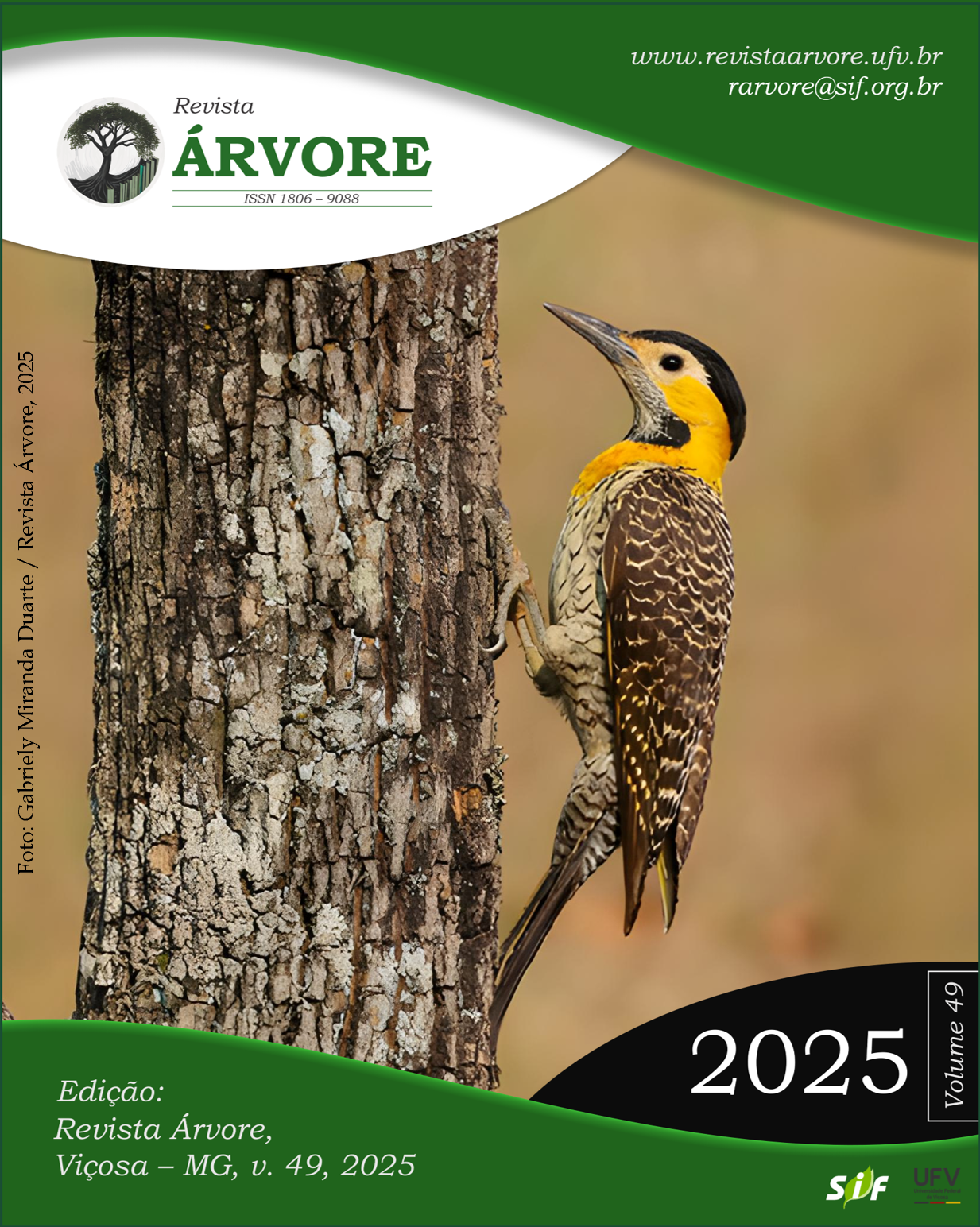Influence of different drying methods on yield, density, color, and chemical composition of the essential oil of Ocotea lancifolia (Schott) Mez leaves
DOI:
https://doi.org/10.53661/1806-9088202549263844Keywords:
Natural compound, Plant extractive, Caryophyllene oxideAbstract
The compounds in essential oils (EOs) are directly linked to their potential use. Drying methods are used to process large amounts of plant material while maintaining or even maximizing quality. This study observed the influence of different drying methods on the yield, density, organoleptic properties, and chemical components of EOs from Ocotea lancifolia leaves, comparing them with oils from fresh leaves. Fresh plant material (F) was subjected to hydrodistillation, a method also used for leaves after air drying (AIR), freeze-drying (FL), microwaving (MW), and oven drying at 45°C (OD 45) or 60°C (OD 60). Drying and extraction were performed in triplicate, using 350 g of fresh leaves and 250 g for the other samples. Yield was calculated as a percentage. Chemical compositions were analyzed by gas chromatography (GC). EO yields were: 0.4863% (F); 0.7400% (AIR); 1.050% (FL); 1.1167% (MW); 0.5867% (OD 45) and 0.7487% (OD 60). Microwaving and freeze-drying provided the highest yields. No differences in densities were observed. A drastic color change was noted in the EOs from leaves dried in an oven at 45°C and 60°C. The major compound identified was caryophyllene oxide, with percentages varying among treatments. Other components showed significant differences in structure and/or percentage. Drying time and temperature influenced modifications and degradation of some compounds, sometimes resulting in changes in EOs color and composition.
Keywords: Natural compound; Plant extractive; Caryophyllene oxide
Downloads
Published
How to Cite
Issue
Section
License
Copyright (c) 2025 Revista Árvore

This work is licensed under a Creative Commons Attribution 4.0 International License.
All authors agreed to submit the work to Revista Árvore and granted the exclusive license to publish the article. The authors affirm that it is an original work and has not been previously published elsewhere. The scientific content and opinions expressed in the article are the sole responsibility of the authors and reflect their opinions, not necessarily representing the opinions of the editorial board of Revista Árvore or of the Society of Forest Investigations (SIF).








